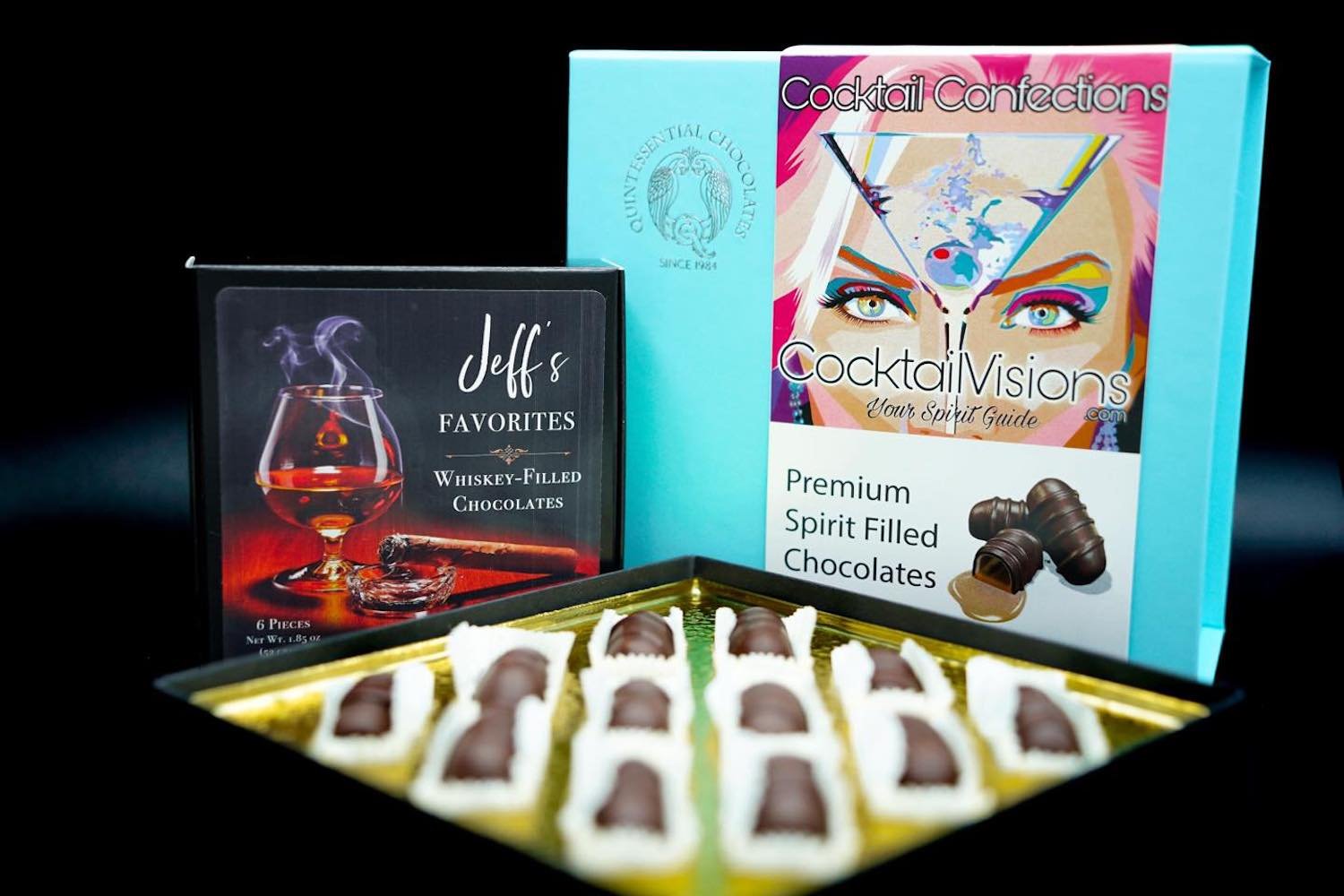How an American Chocolatier Found Success with a Swiss Chocolate Technique
Liquor filled chocolates
Lecia Duke didn’t set out to preserve a 185-year-old Swiss confectionary technique when she started Quintessential Chocolates 40 years ago. But when a corporate customer asked the architect-turned- chocolatier for custom sweets with a liquid Jack Daniels center, she recalled a confection she’d had in Europe, with a fresh shot of spirits enveloped within a delicate shell and enrobed in fine chocolate. She asked her supplier at the time, Lindt & Sprüngli, if they could recommend an instructor to teach her the technique, zuckerkruste liqueur praliné, or, in Lindt parlance, the liquid moisture barrier process (LIMOBA). They set her up with their in-house instructor, master chocolatier Art Oberholzer.
What is Zuckerkruste?
Zuckerkruste technique
“It’s an extension of a starch-casting technique,” explains chef Stephen Durfee, a former pastry instructor at the Culinary Institute of America and currently director of curriculum at Dandelion Chocolate in San Francisco, of the zuckerkruste technique. “So many sweets get cast in corn starch: jelly beans, marshmallows, gummy bears—any molded confection.”
The simplest version of the technique begins with waxy maize corn starch, which consists of amylopectin molecules that give it greater binding power than traditional corn starch. The chocolatier sifts the starch into high-sided pan and levels the top. She presses molds of any shape into the starch, and heats it at low temperature for a few hours, to remove all moisture.
The liquid center has a sugar-syrup base. Before the liquid reaches the crystal stage, the confectioner adds alcohol. “Brandy and whiskey are the classics,” Durfee says. “But, generally, anything 80 proof will work.” The viscosity of the resulting syrup prevents the cornstarch from absorbing it. Instead, the starch forms a dainty, eggshell-like capsule around the spirits. The capsules are rotated a few hours later to ensure even shell formation. Once firmed up, they’re ready to be covered in chocolate.
Duke adds, “Chocolate is an interesting ingredient. If there’s liquid on one side and air on the other, it will pull from both sides to equalize the pressure. So, if you take a bottle-shaped piece of chocolate and inject liquid into it and cap it off, liquor will work its way into the chocolate. The edible moisture barrier prohibits the chocolate from extracting the alcohol.”
Filled chocolate photo credit Eva Simpson
Adapting a Classic Technique
Even timeworn methods sometimes need a modern tweak, and Duke has innovated within the original Swiss technique. In Europe, zuckerkruste liqueur praliné chocolates are known as batón, because of their shape—about the diameter and one-third the length of a ballpoint pen. “Europeans would pick it up and put it in their mouth, cheek to cheek, but Americans would bite into it and wear it,” Duke says. Her chocolates, designed for the perfect all-in-one bite, are about 1.25 inches long and .75 inches in diameter.
In Europe, zuckerkruste liqueur praliné chocolates have between 22 and 25 percent alcohol by volume. In keeping with United States law of no more than 5 percent alcohol, Duke had to develop more moderate recipes. The resulting chocolates come in at a punchy, flavor-packed 2.6 percent.
When Duke first began making liquor-filled chocolates, Oberholzer told her she’d never be able to make a nonalcoholic version, because the alcohol toughened up the shell. But when her daughter was in elementary school, she asked if she could bring some filled chocolates to school for show and tell, Duke experimented until she created a version with a nonalcoholic black cherry nectar. At Chocolat, her shop and production factory in downtown Fredericksburg, she now sells seven nonalcoholic liquid-filled chocolates. She has also created chocolates with wine and cocktail centers, such as pisco sour and margarita. Each new recipe takes three to five days to develop.
The Best Ingredients
Chocolates photo courtesy of Chocolat
For her chocolate, Duke uses Merckens Yucatan, which contains about 53 percent cocoa solids. She partners with a number of local wineries and distilleries, including Ranger Creek out of San Antonio, Garrison Brothers in Hye, Republic Tequila from Austin, and Becker Vineyards and Fredericksburg Winery in Fredericksburg. She also sources top-shelf wine and spirits from abroad, including Penfolds Club Tawny Port from Australia, Scotland’s Macallan Double Cask 12 Year Old whiskey, and Five Farms Single Batch Irish Cream liqueur from Ireland. Duke’s paramount consideration for any partnership is that the product be consistent from batch to batch; otherwise, she would have to redevelop her recipes each time.
While Duke has developed more than 500 flavors over the decades, she typically offers about 36 flavors per year. Top sellers include Irish Cream, Tequila Rose Strawberry Cream, and Garrison Brothers Bourbon. All are available for purchase online, or at Chocolat.
Duke and her small but tight-knit staff produce about 30,000 pieces of liquor-filled chocolate per year, using custom-built equipment of her own design. They also make confections from Fortunato No4, a rare cacao that grows only in a remote region of the Peruvian Andes and is thought to be the mother tree of all cacao, plus chocolates that incorporate traditional healing herbs like turmeric and ciaga.
No matter how large the flavor range and polished the presentation, Duke says, “I want people to know that this is still an artisan product, still handmade every day. It will remain that way as long as I walk the earth.” Read more about Quintessential and Chocolat.




